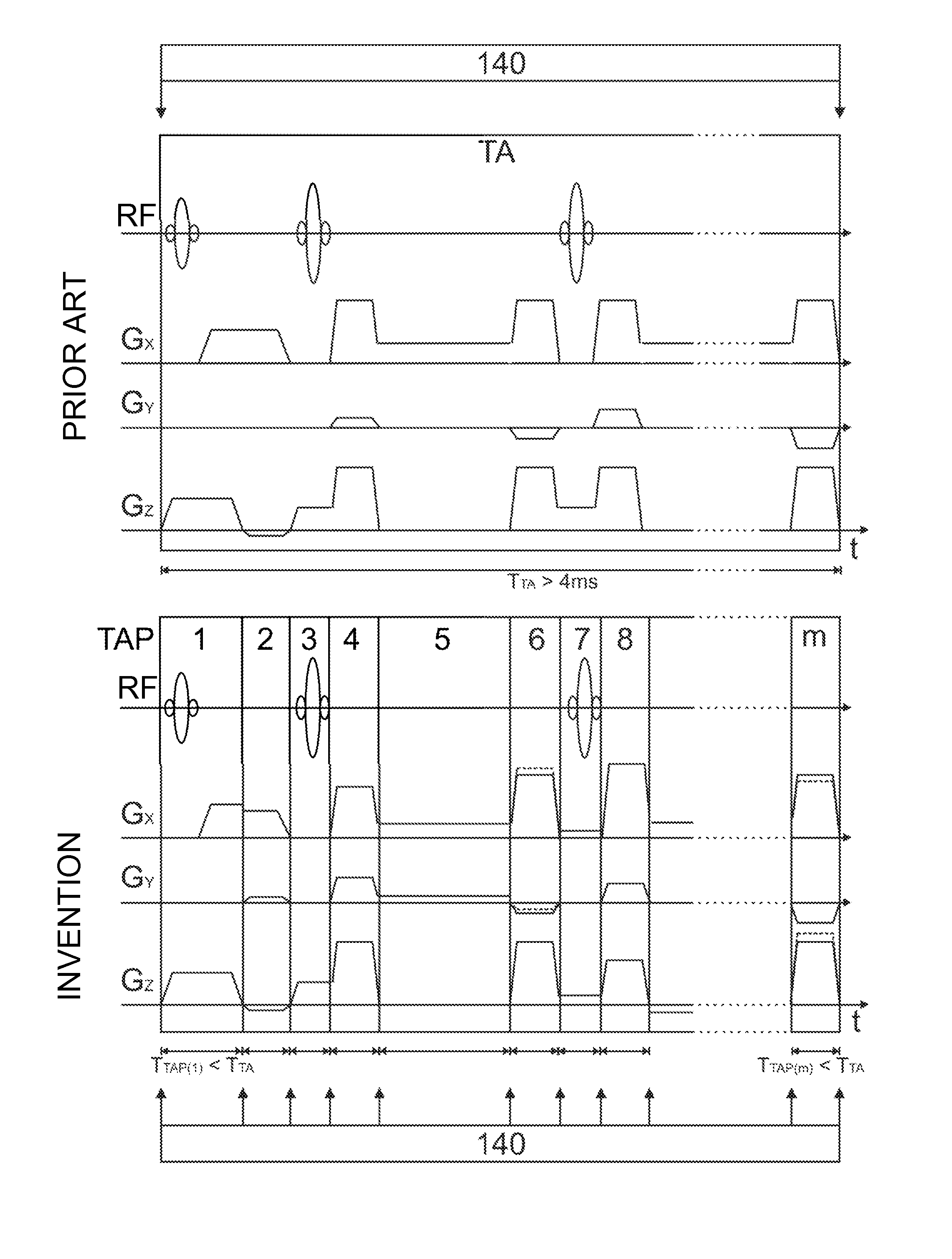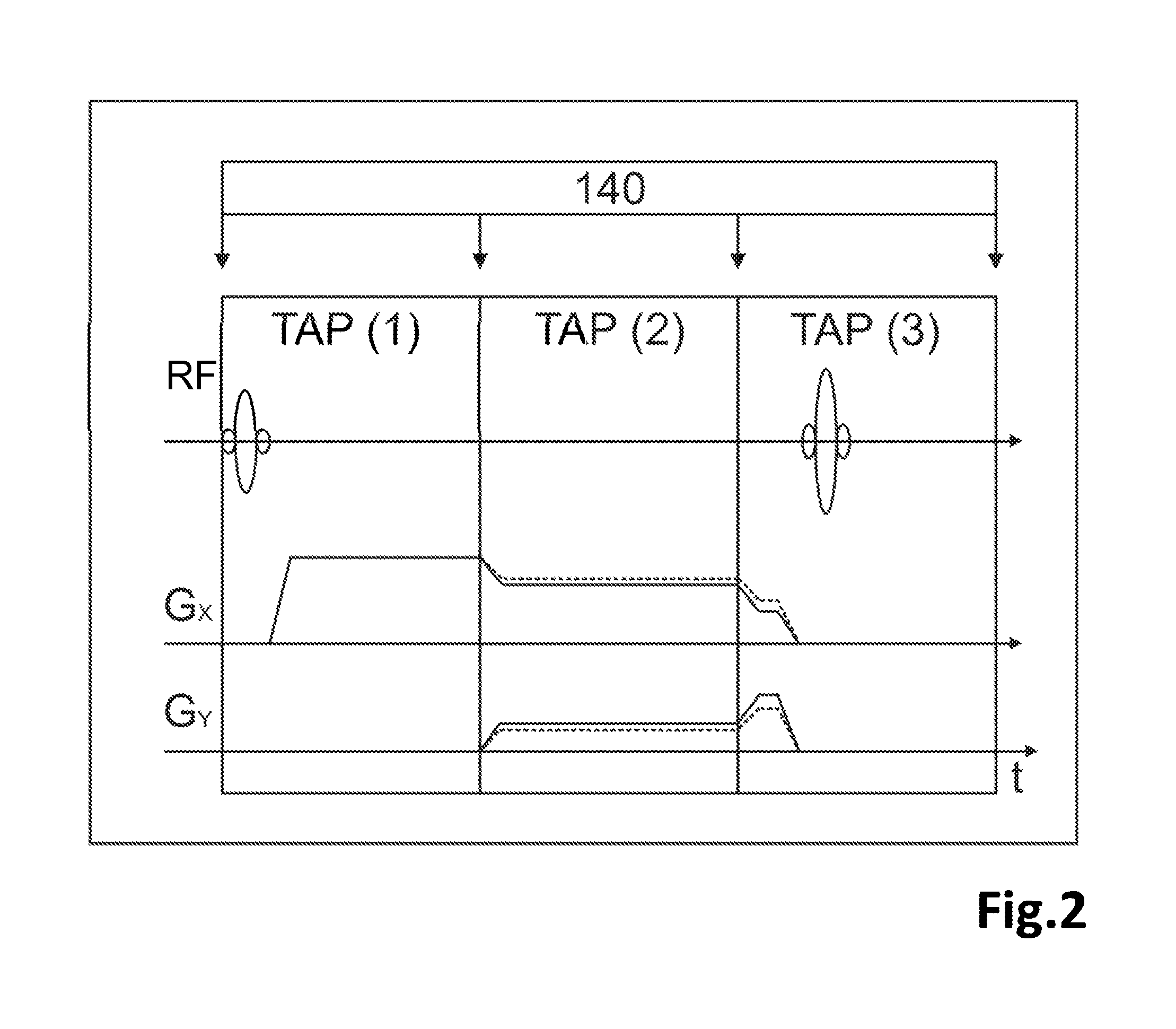Method for quasi-continuous dynamic motion correction in magnetic resonance measurements
a magnetic resonance and quasi-continuous technology, applied in the field of mr (= magnetic resonance) imaging and spatially resolved mr spectroscopy, can solve the problems of disturbance of the condition, no motion correction is possible, and the time progression of mr acquisition has to be adapted for motion correction, etc., to achieve simple but effective
- Summary
- Abstract
- Description
- Claims
- Application Information
AI Technical Summary
Benefits of technology
Problems solved by technology
Method used
Image
Examples
Embodiment Construction
[0064]FIG. 1 shows a chart of the method for dynamic motion correction during a partial acquisition TA, wherein the partial acquisition is divided into shorter partial acquisition partitions TAP(1), TAP(2), TAP(3), . . . , TAP(m), wherein if long gradients are necessary they are divided into shorter partial gradients 101. The figures indicate the times for partial acquisition and for the partial acquisition periods with the symbols TTA, TTAP(1), TTAP(2), TTAP(3) and TTAP(m), respectively. For comparison, the corresponding partial acquisition without the use of the described method is shown in 102. A partial gradient is always switched off when the following gradient begins. An uninterrupted transition results from the rise and decay time of a gradient. The measurement system 140 determines position data with which motion correction is performed.
[0065]The partial acquisition shown is the section of an MR acquisition for DWI. DWI is frequently used in everyday clinical practice to rep...
PUM
 Login to View More
Login to View More Abstract
Description
Claims
Application Information
 Login to View More
Login to View More - R&D
- Intellectual Property
- Life Sciences
- Materials
- Tech Scout
- Unparalleled Data Quality
- Higher Quality Content
- 60% Fewer Hallucinations
Browse by: Latest US Patents, China's latest patents, Technical Efficacy Thesaurus, Application Domain, Technology Topic, Popular Technical Reports.
© 2025 PatSnap. All rights reserved.Legal|Privacy policy|Modern Slavery Act Transparency Statement|Sitemap|About US| Contact US: help@patsnap.com



